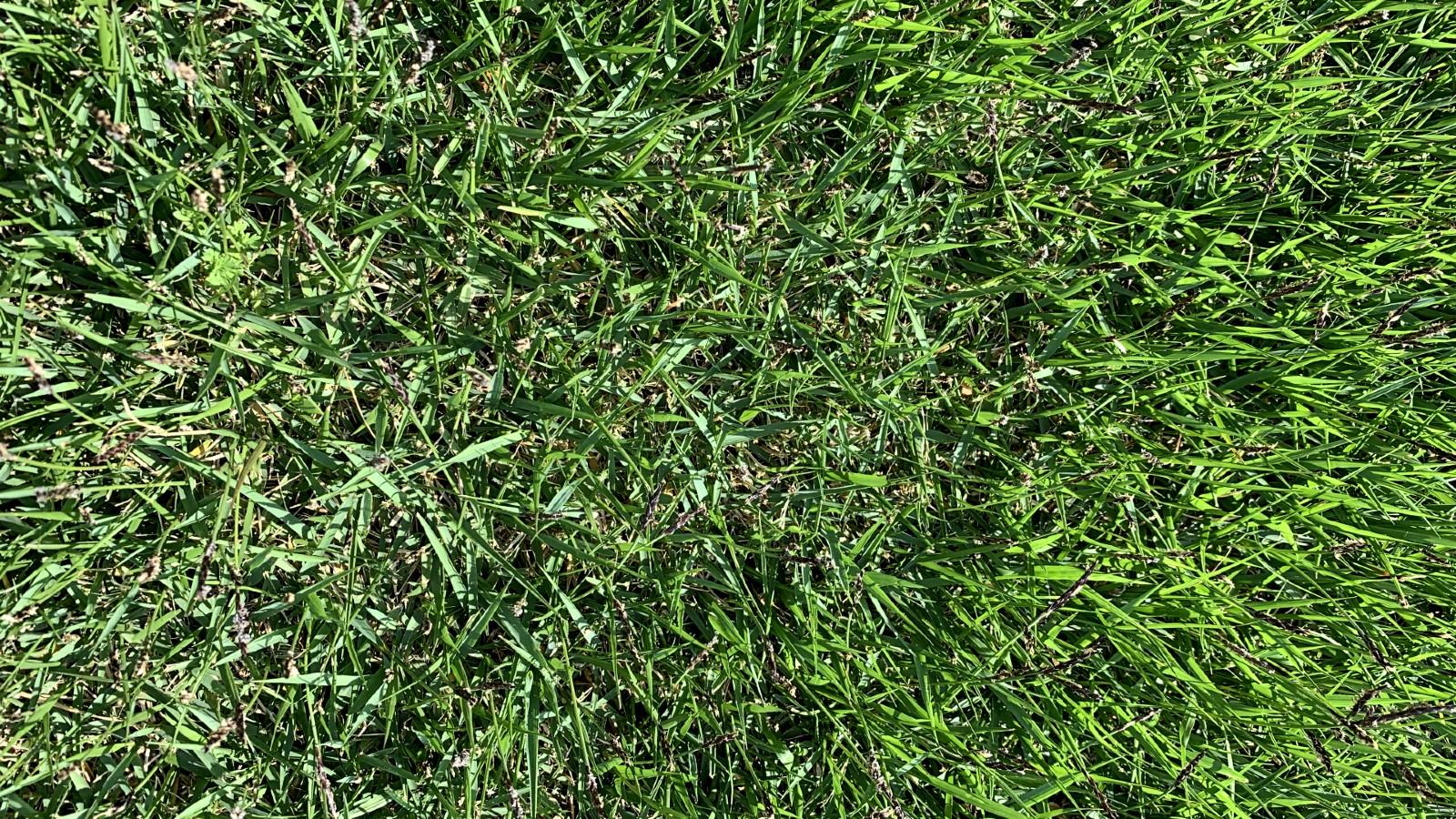Dead patches or brown spots are common symptoms of a lawn problem. However, they can be caused by disease, insects, or an abiotic issue like dog urine or fertilizer burn making a diagnosis challenging.
Problems with the general appearance of the grass
| Symptoms | Possible Cause | Management/Comments |
|---|---|---|
| General straw-colored or browning of cool-season turfgrass cultivars or turf appears dry and bluish-green in color. |
Drought - first signs will be evidence of footprint impressions and lighter green or gray color of turf. |
Cool-season turf cultivars will recover when rain or irrigation increases soil moisture |
| Rings or arcs of dead or green grass and mushrooms may be present. |
Fairy rings - rings or arcs of dead or green grass bordered by zones of darker green grass. More common on droughty sites and poorly nourished turf. Occurs on all turf cultivars year-round.
|
Aerate turf in fall, maintain adequate nitrogen fertility and adequate water during dry spells. |
| Circular, straw-colored patches. | Summer patch - circular patches that range from 3 - 12 inches in diameter. This disease occurs in bluegrass and fine fescue lawns 2 years or older, July through September. |
Avoid excessive nitrogen especially in spring. Use slow release nitrogen sources. Increase mowing height, avoid light frequent waterings and reduce thatch build-up. |
| Irregular brown patches with white moths flying over the turf. |
Sod webworms - brown caterpillars may be found at the base of the blades and in the thatch. Active from May through September. |
Reseed damaged grass with tall fescue, or spray with Bt insecticide that targets the caterpillars. |
| Straw colored patches surrounded by a ring of dark green turf. |
Dog urine - can resemble some diseases. May kill the crown tissue (the growing point of a grass plant). |
Heavy irrigation of the spots will promote recovery. Spot reseeding may have to be done. |
| Banded streaks or irregular patterns. | Fertilizer or chemical injury - grass may be stimulated at the margins. May kill the crown tissue. |
Calibrate spreaders and sprayers for uniform and accurate application of materials. Do not fill spreaders on grass. Sweep any fertilizer that falls on hard surfaces back into the grass after filling the spreader. |
| A large yellow area in grass near or downstream from a pool. |
Chlorine damage - from pool water |
Leach chlorine through the soil with water. Replant the damaged area. |
